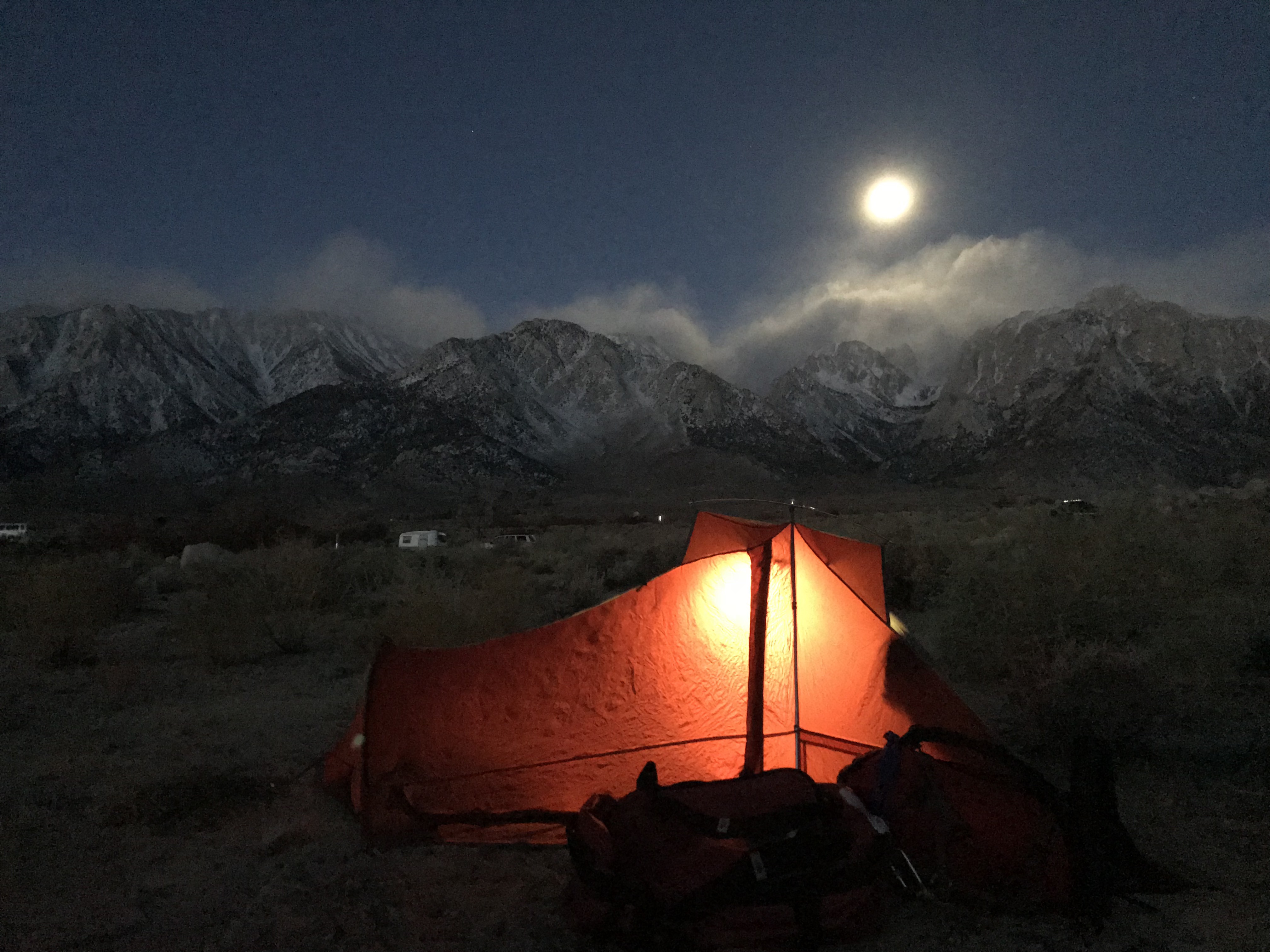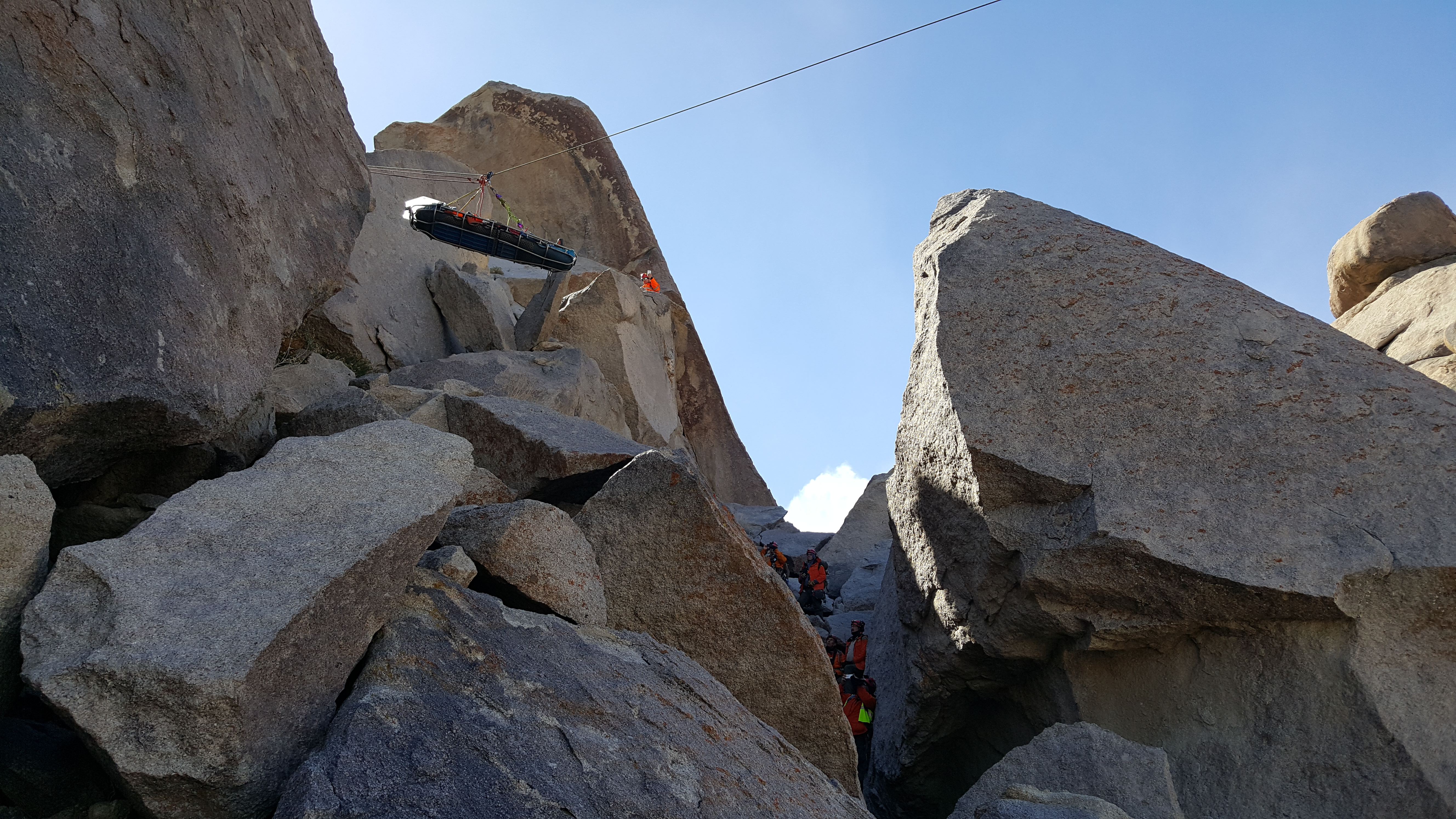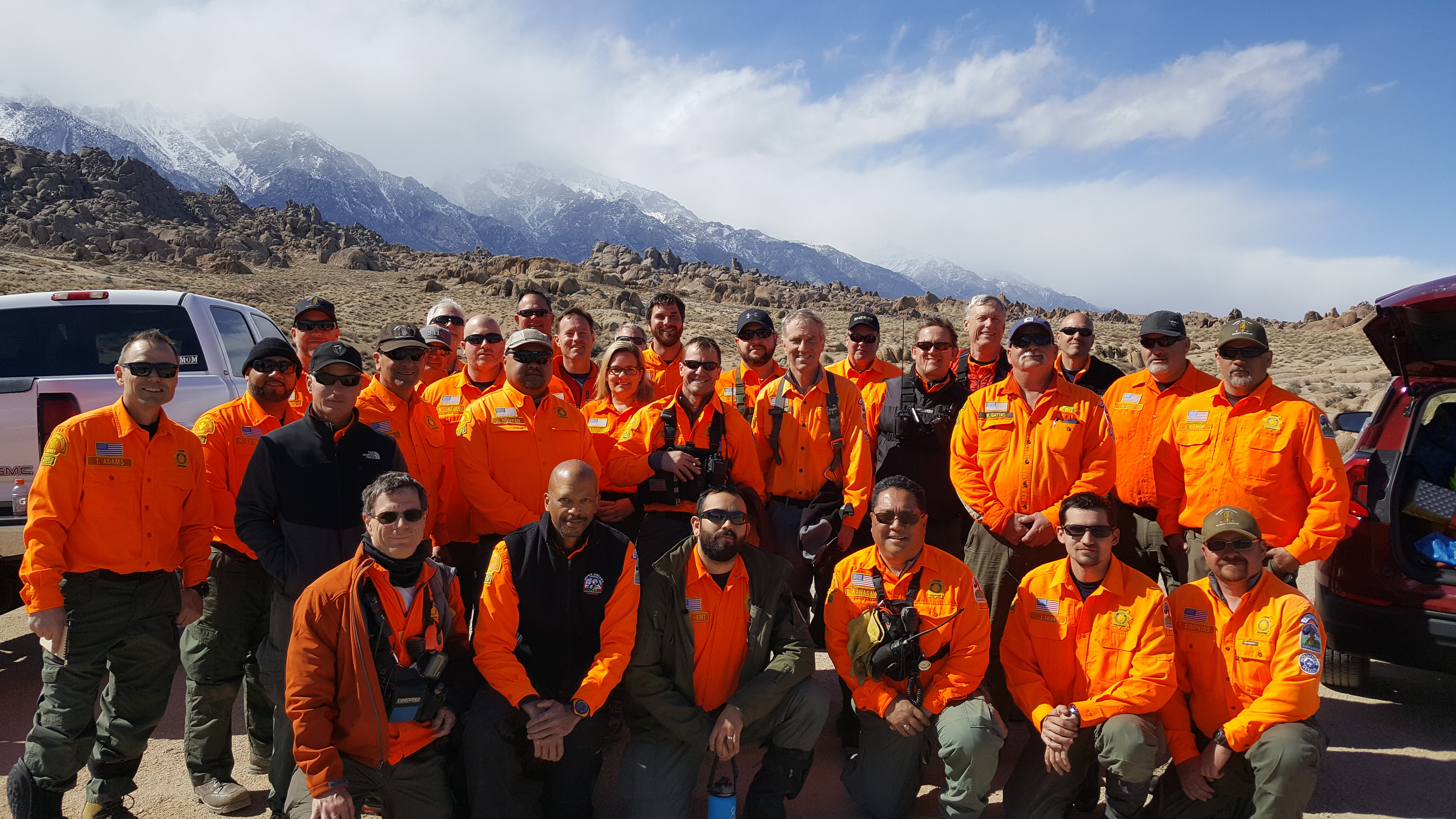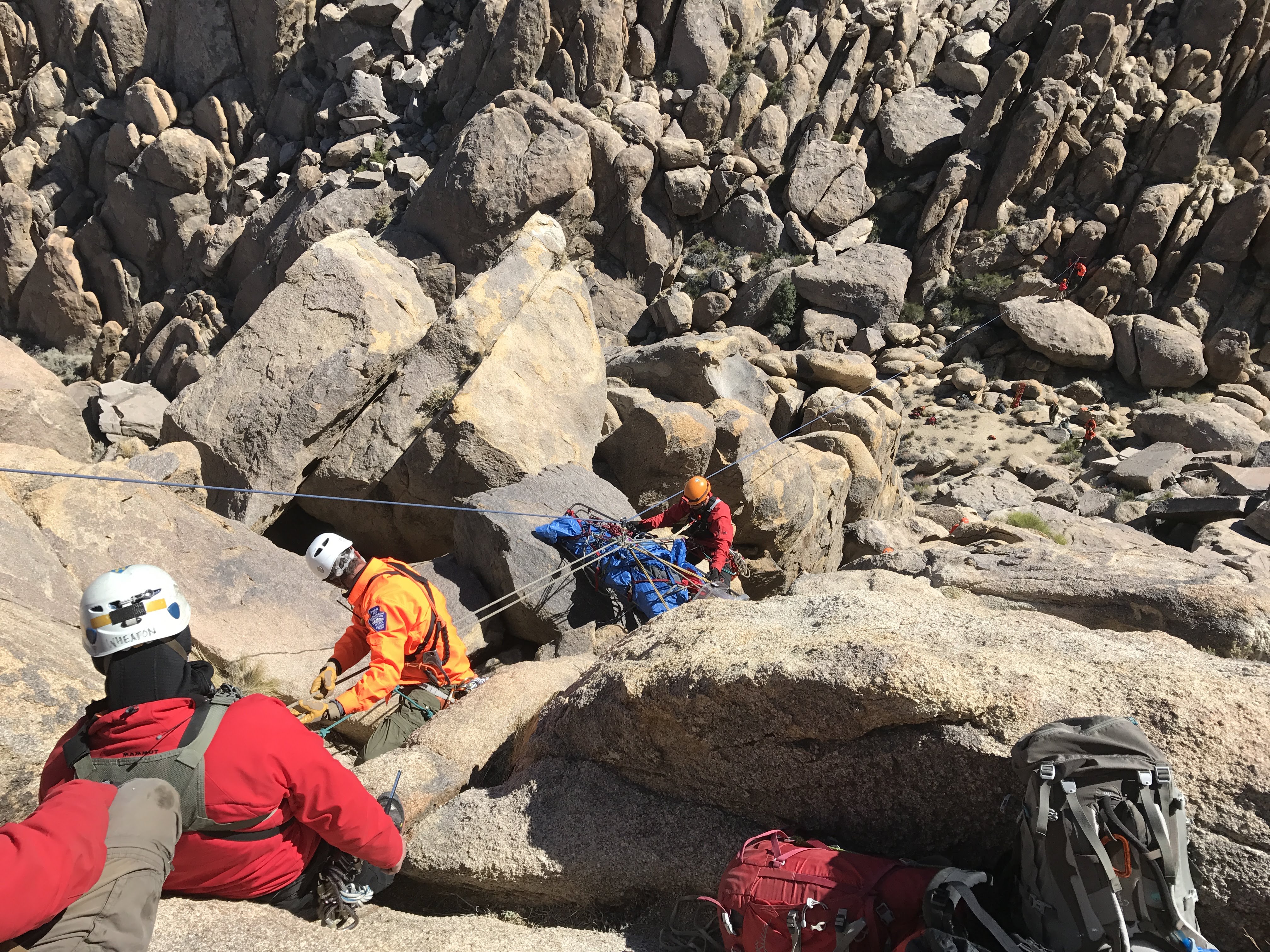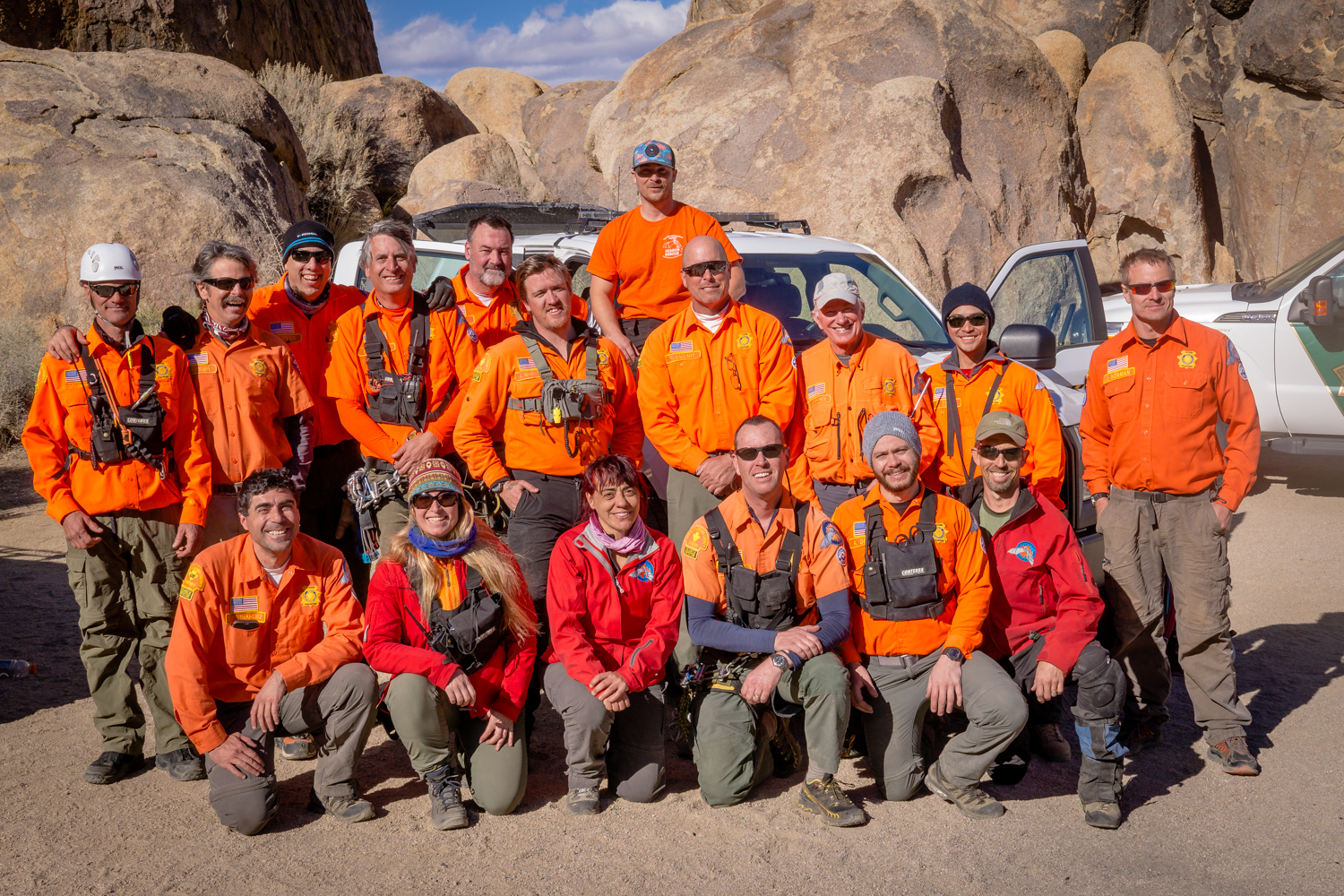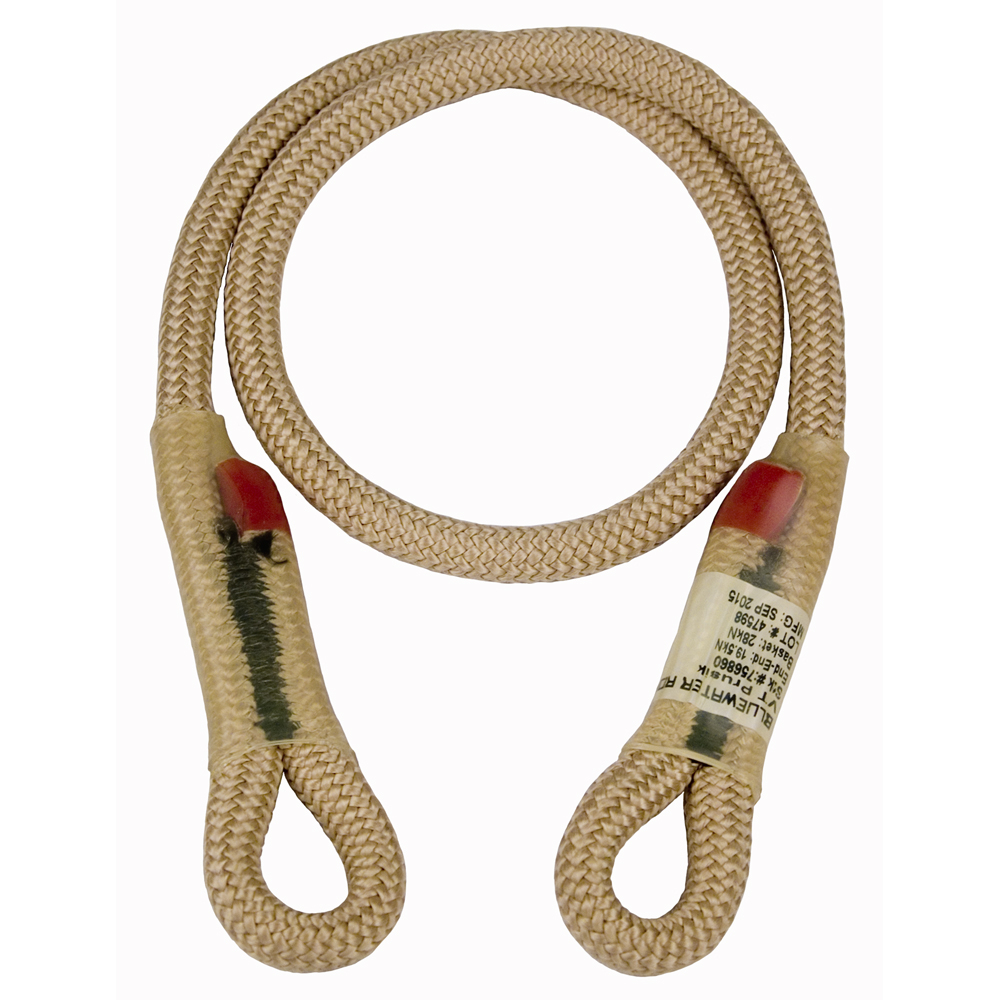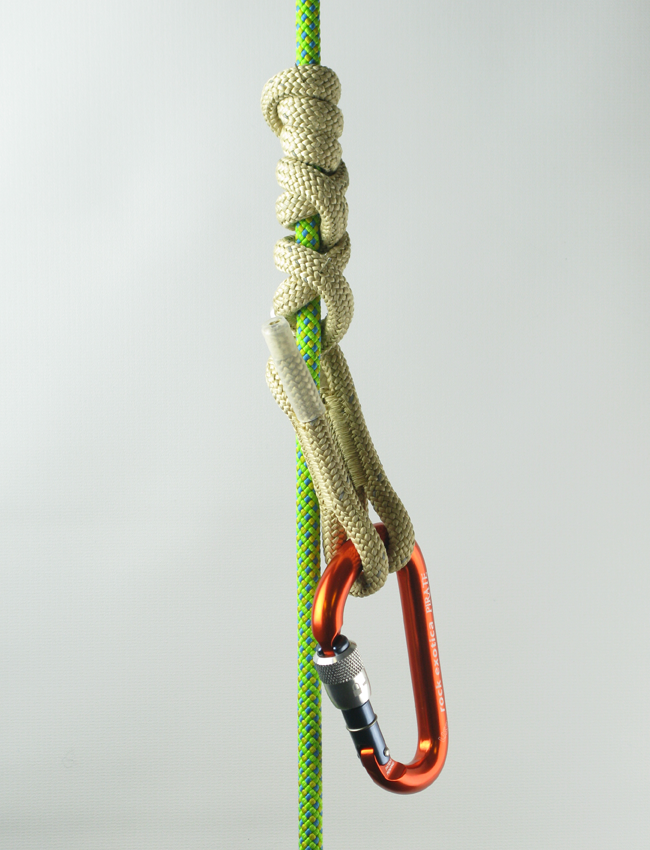Cave Team works with Death Valley National Park Rangers
 Friday, February 28, 2020 at 14:23
Friday, February 28, 2020 at 14:23  Sonny Lawrence
Sonny Lawrence The San Bernardino County Sheriff Cave and Technical Rescue Team was invited to do a joint training with rangers at Death Valley National Park. The goal was to develop a hasty team that can get to an injured subject and stabilize him/her in preparation for a helicopter extraction.
The park is steadily experiencing increased canyoneering. At the moment there are more than 300 identified technical canyons in the park. The canyoneering season is the cool/cold months. It is far too hot in the summer to do canyons. Some of the canyons are relatively easy access with a short hike or shuttle. Some require significantly more effort (heavy packs and long hikes). Huge groups of canyoneers meet during the winter holidays in order to socialize and explore canyons.
The Coalition of American Canyoneers (CAC) has sponsored a Death Valley cleanup event: www.americancanyoneers.org/death-valley-service-project-report/
The joint training involved nine members of the Cave team and nine rangers. Initially we had a round table discussion about the basics of canyoneering in class A canyons and how it differs from technical rope rescue. We spent 1 ½ days in Scorpion Canyon. All anchors in the canyon were taken apart. Webbing was replaced. For anchors we built typical cairn anchors, rock chocks, knot chocks and simple loops over horns. We practiced courtesy starts for difficult to access rappels. We backed up anchors with human anchors. We protected rope via padding or creeping the rope. We experimented with a large variety of canyoneering ropes and rappel devices. We performed pack drags and partner assists for downclimbing.
And of course, we were treated with fantastic weather, including great views of snowcapped Telescope peak.
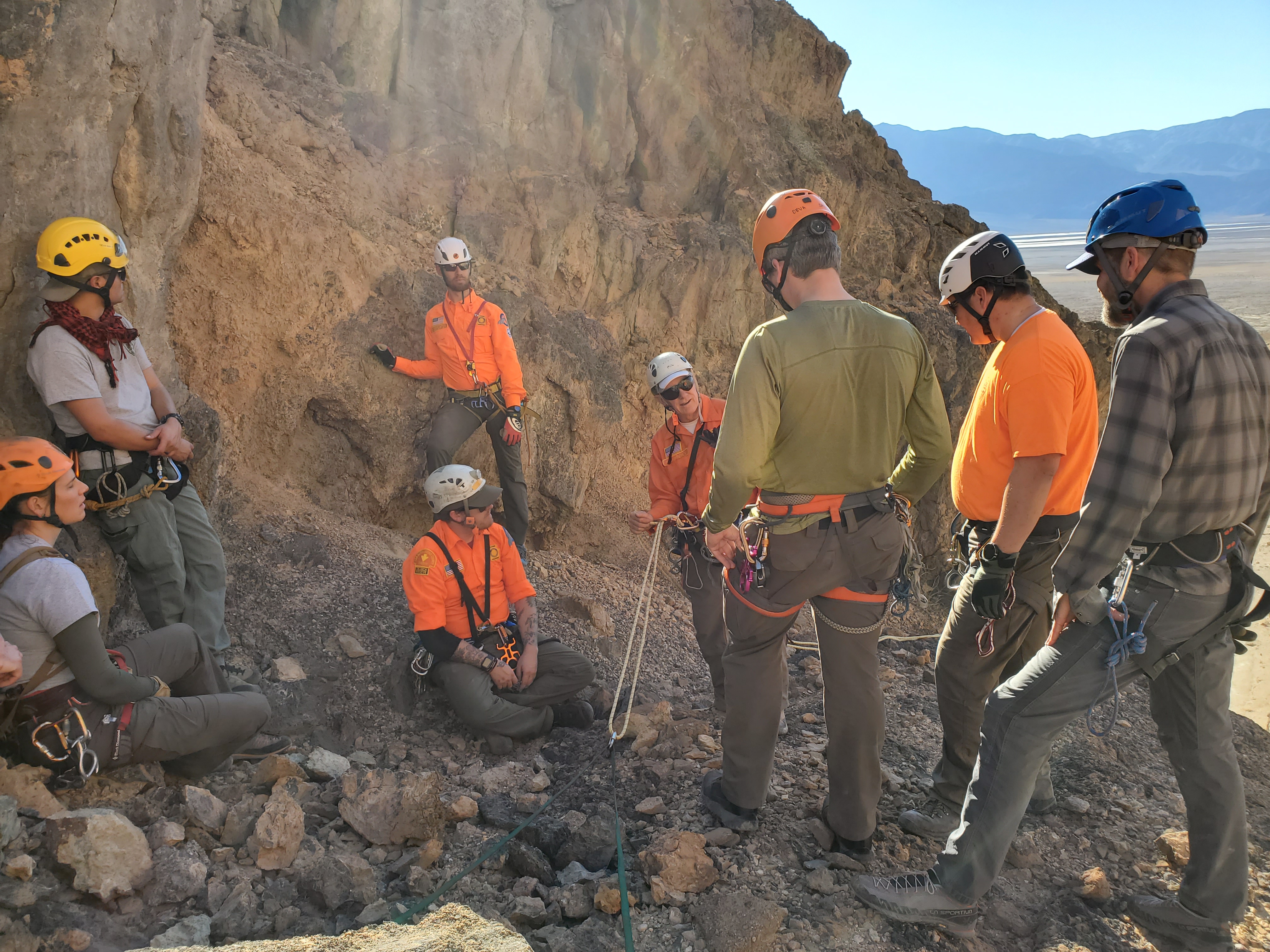
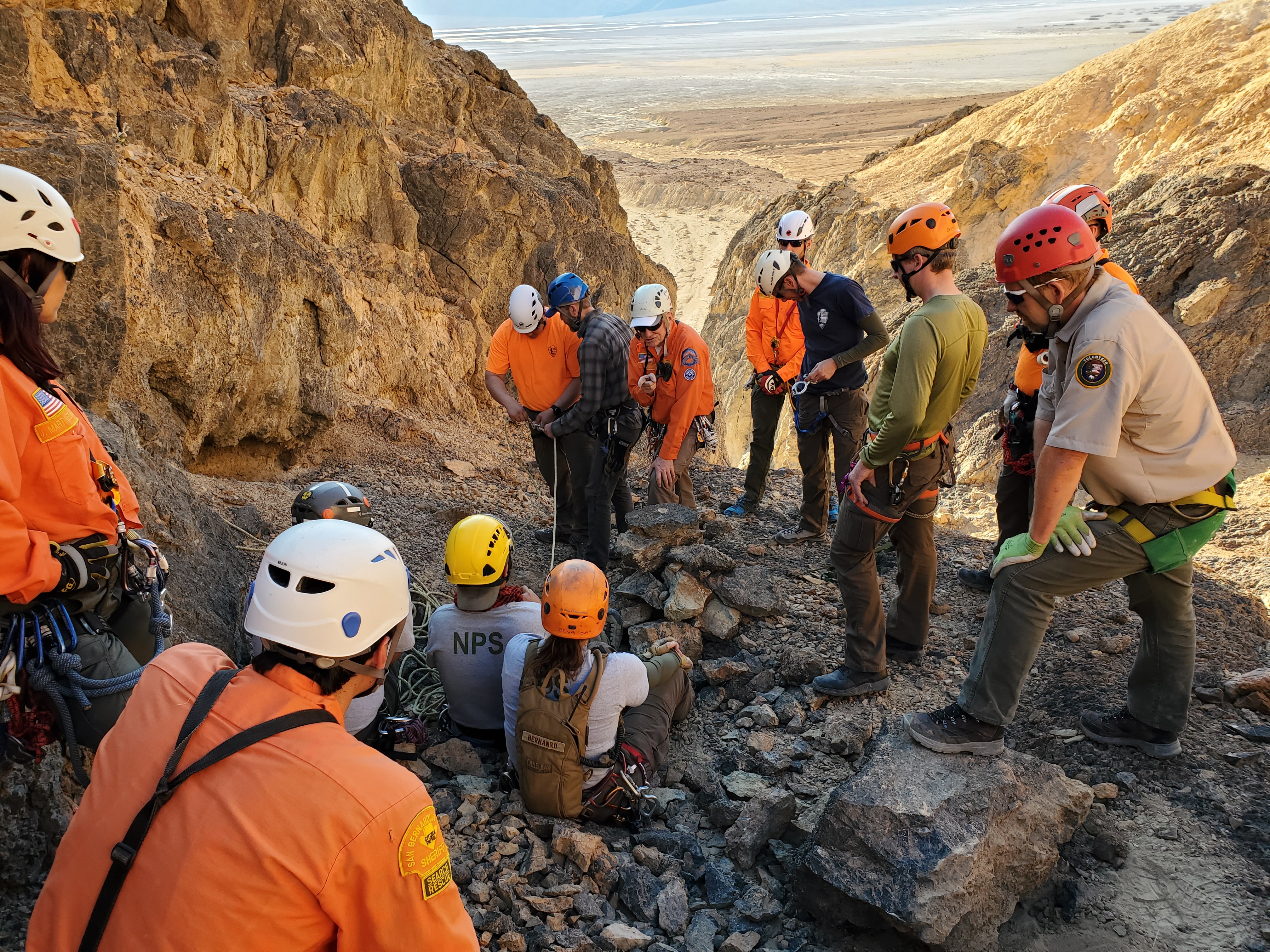
 Cave Team,
Cave Team,  Death Valley,
Death Valley,  Technical Rope
Technical Rope 
